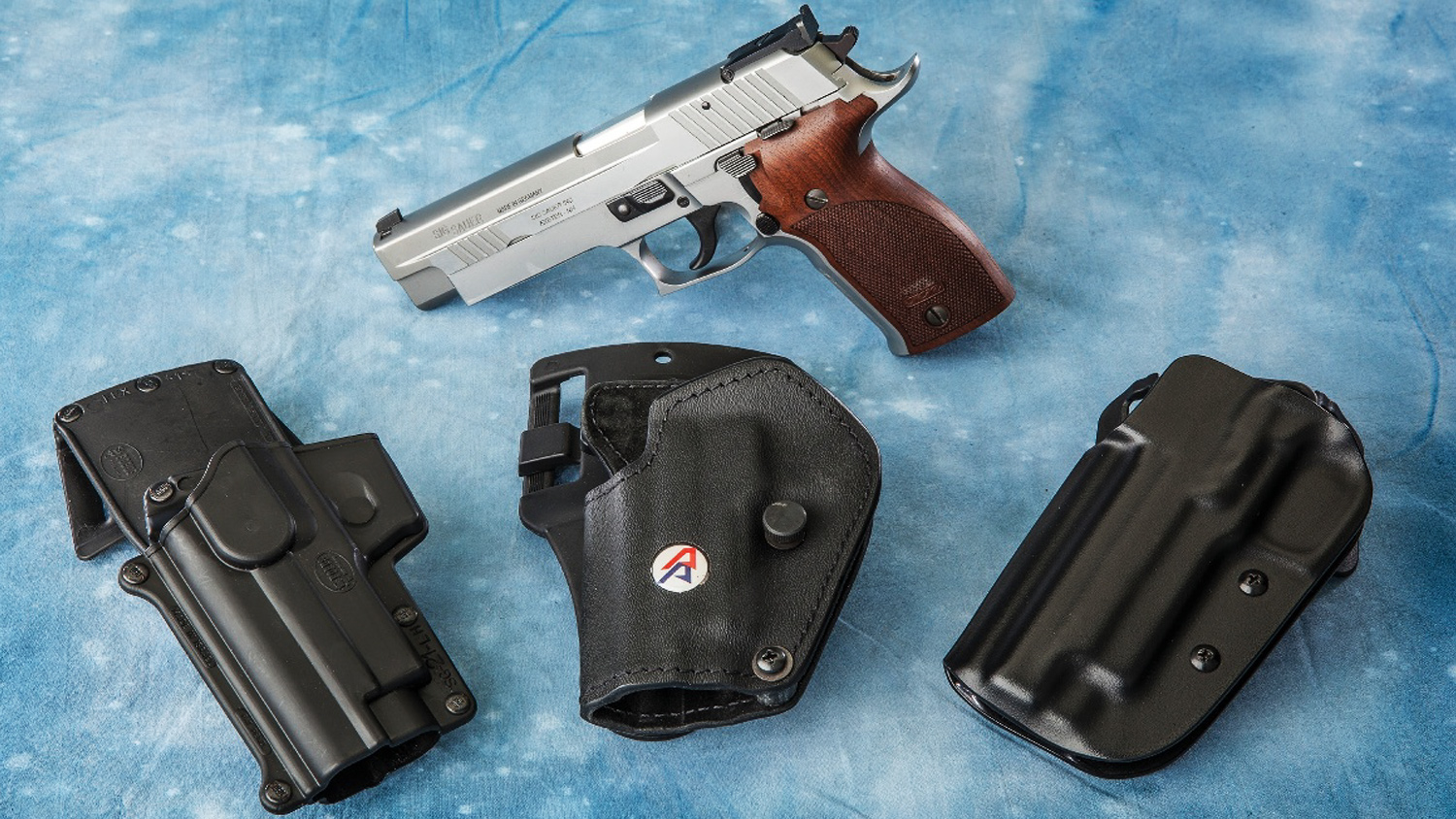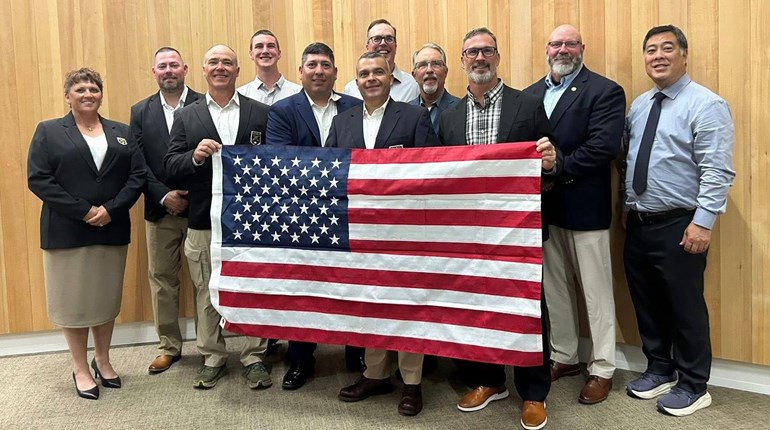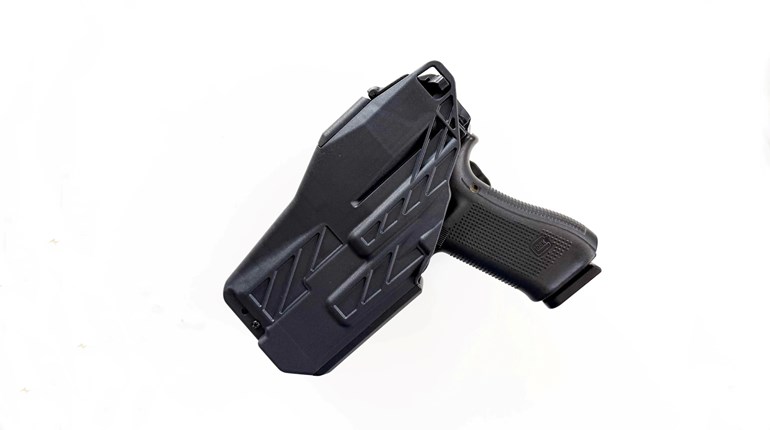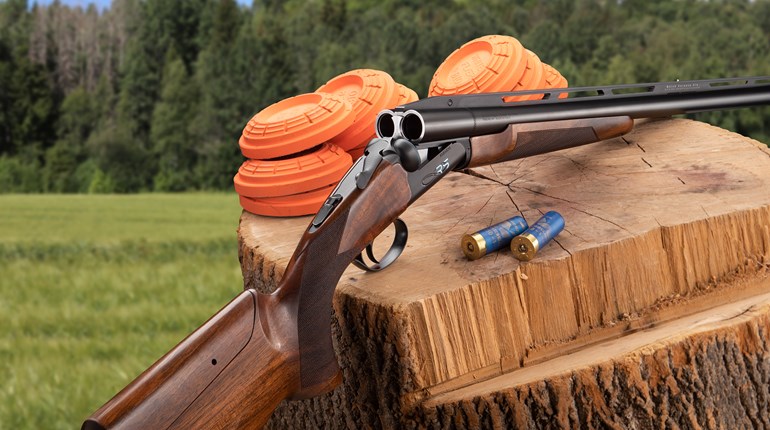
Above: Three examples of Kydex drop holsters from (l. to r.) Fobus, Competitive Edge Dynamics and Blade-Tech, displayed with a SIG Sauer X-Five All Around pistol.
Kydex: Beginning as a 1965 invention for aircraft interiors, Kydex is trademarked by Kydex, LLC, the only manufacturer of this material. It is a thermoplastic, acrylic (provides good rigidity) polyvinyl chloride (PVC provides tough, chemical resistance with a smooth finish) material that comes in sheets of appropriate thickness for holsters and knife sheaths. Kydex advantages include a perfect fit (if designed for your particular gun) without the need for break-in, as do leather holsters. Kydex won’t “relax” or change dimensions over time. This is especially important for the belt loops in order to maintain proper positioning of the gun on your hip. Perfect fit can also be a handicap if the manufacturer doesn’t make a Kydex holster specifically for your gun. Even a “close match” may not fit your gun properly, or safely. At a cost of $50,000 and up for a new mold, it’s understandable why holster manufacturers choose wisely before deciding to expand their line.
Nylon: Nylon’s principle advantage as a holster material is that the designs accommodate virtually any gun because of the material’s flexibility. This can also be a handicap if the material is too soft. The relative stiffness of nylon is referred to as Denier, a unit of the linear mass density of fiber. Thus, a holster made with 1000 Denier nylon can be assumed to be stiffer than one using 800 Denier.
Leather: If properly maintained (waxed, never oiled), leather can be a good compromise between too-soft nylon and too-rigid Kydex. Similar to the choice of synthetic or walnut rifle stocks, this is often a matter of personal taste.
As far as wear and tear on your gun—From the Milt Sparks website, maker of fine custom holsters:
“The act of drawing your pistol from whatever container you choose to carry your gun in, creates friction at the points of contact, and eventually those points will begin to show signs of wear. For that reason it would be unreasonable to expect that your personal sidearm will remain in pristine condition forever. It matters not whether your holster is lined or un-lined, as a lined holster simply delays the inevitable. If you practice hard, your gun’s finish will wear, or maybe it would be better to say, develop character … Holsters, whether they are made of plastic, leather, horsehide/cowhide, lined or un-lined, soft leather/ hard leather, do not protect gun finishes as much as we would like.”



































